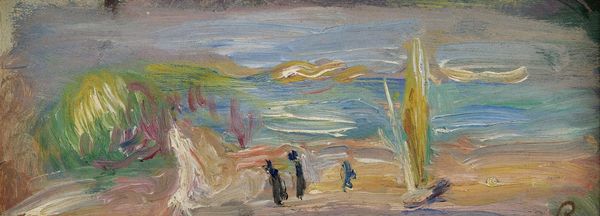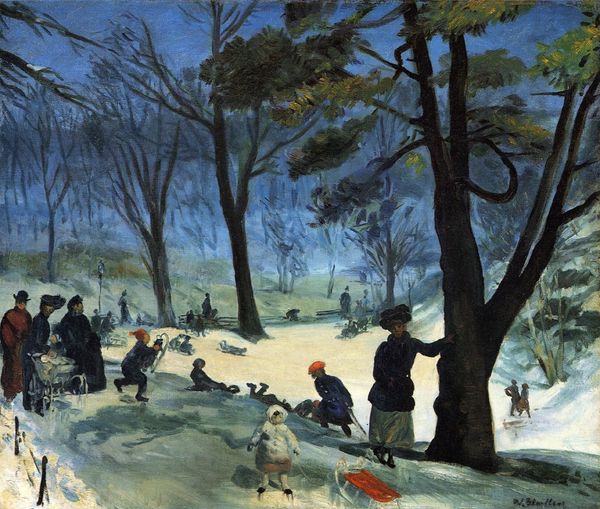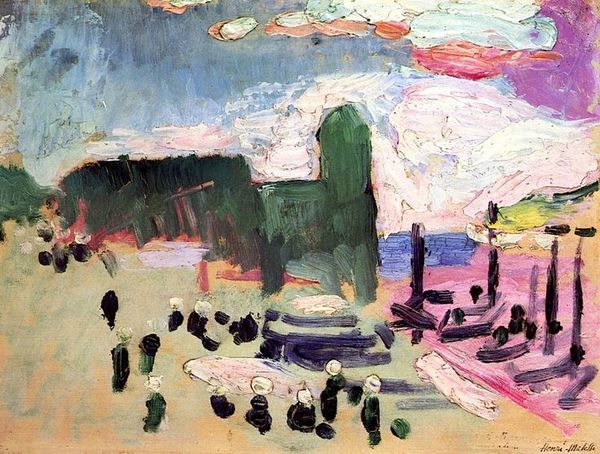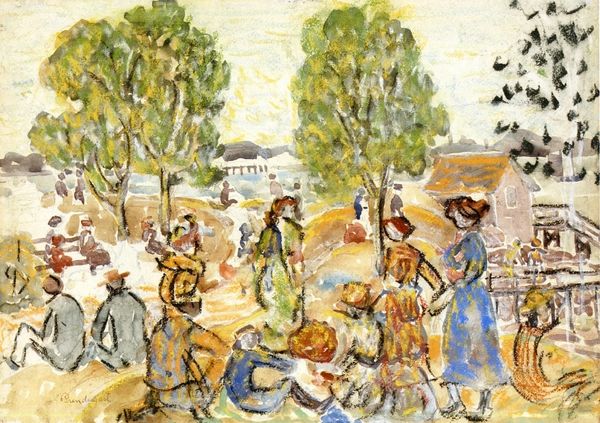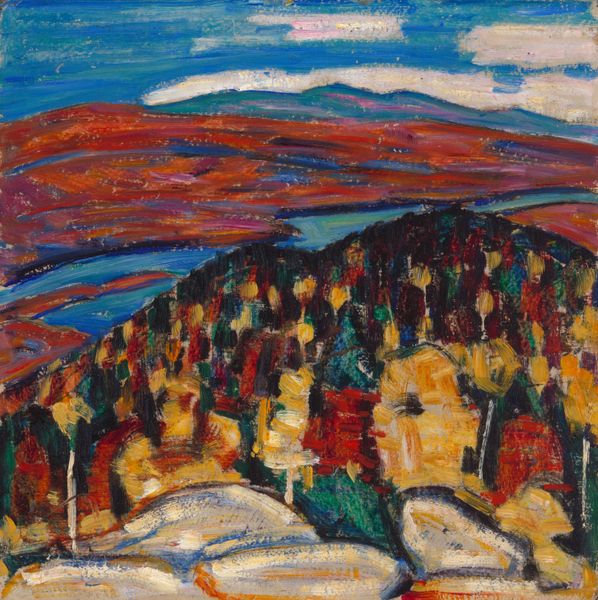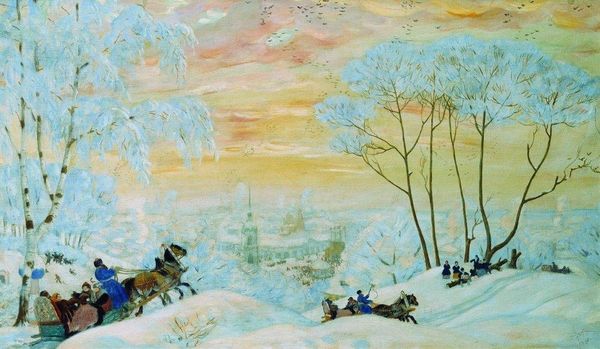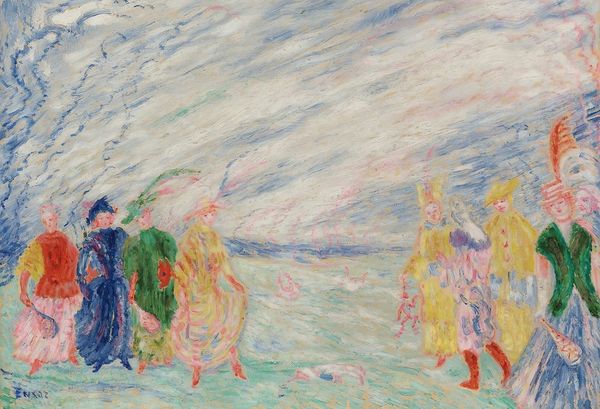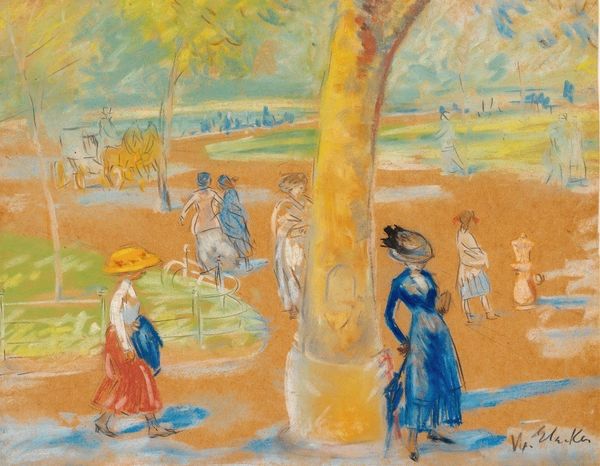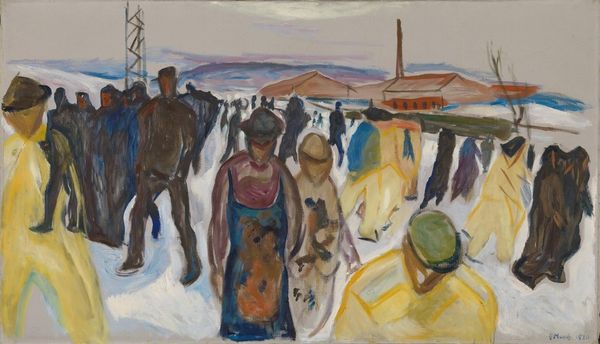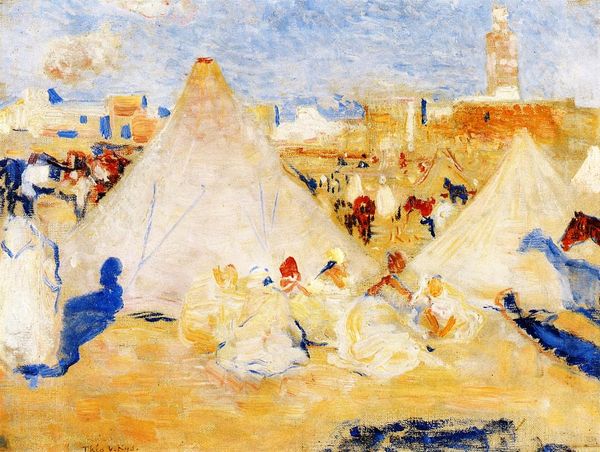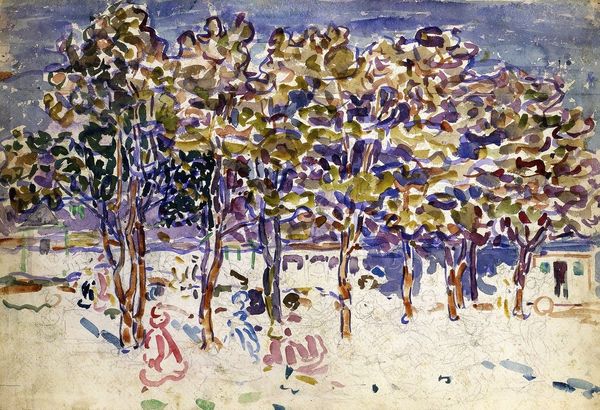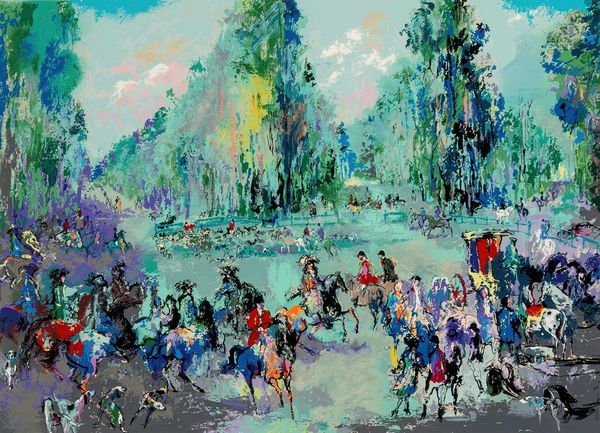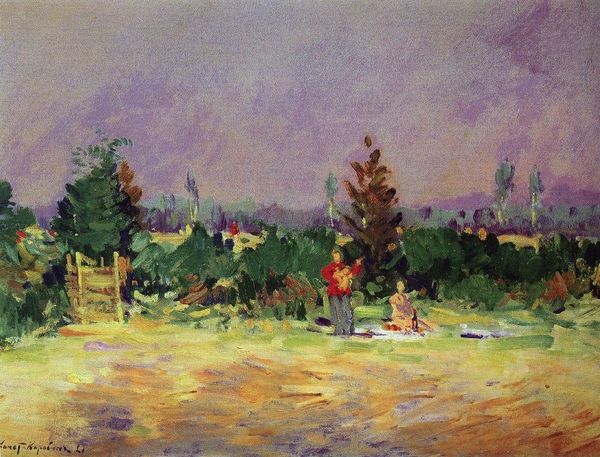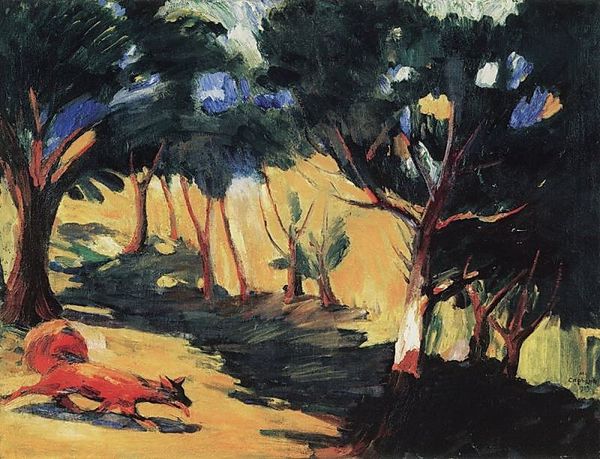
Copyright: Public domain
Editor: This is “Skating in Central Park” by William James Glackens, painted around 1910 using oil on canvas. It’s lively! So many people enjoying a winter day… what stands out to you when you look at it? Curator: Beyond the initial impression of joyful winter activity, consider the deeper, perhaps unconscious, symbols at play. Notice the hill dominating the background—earth as a maternal symbol, unchanging. Do you see how the skaters are enacting a kind of dance before it, a ritualized performance? Editor: That’s an interesting way to frame it. I was focusing on the dynamism, the impressionistic brushstrokes suggesting movement. But a "ritual?" Curator: Observe how the figures are arranged. Groups interacting, individuals moving alone, pairs coupled together. It mirrors, doesn’t it, the choreography of human connection itself? Skating is the medium, but community is the message. It suggests both individual freedom and shared experience. How does that interplay of foregrounded motion with the static backdrop speak to you? Editor: I see it now. The skaters create fleeting patterns against the stable landscape. They're like actors on a stage, playing out the human drama. Curator: Precisely! It also tells us something about that era's need for a new national identity in the face of modernization: we seek common values in our leisure. Consider, then, how Glackens has captured not merely an afternoon of skating, but a microcosm of societal desires projected onto a canvas. Editor: That is fascinating; thank you. I hadn’t considered the cultural weight of what appears, at first glance, to be simply a pleasant winter scene. Curator: Indeed. Images often hold within them cultural echoes. Peeling back those layers is part of the journey.
Comments
No comments
Be the first to comment and join the conversation on the ultimate creative platform.
